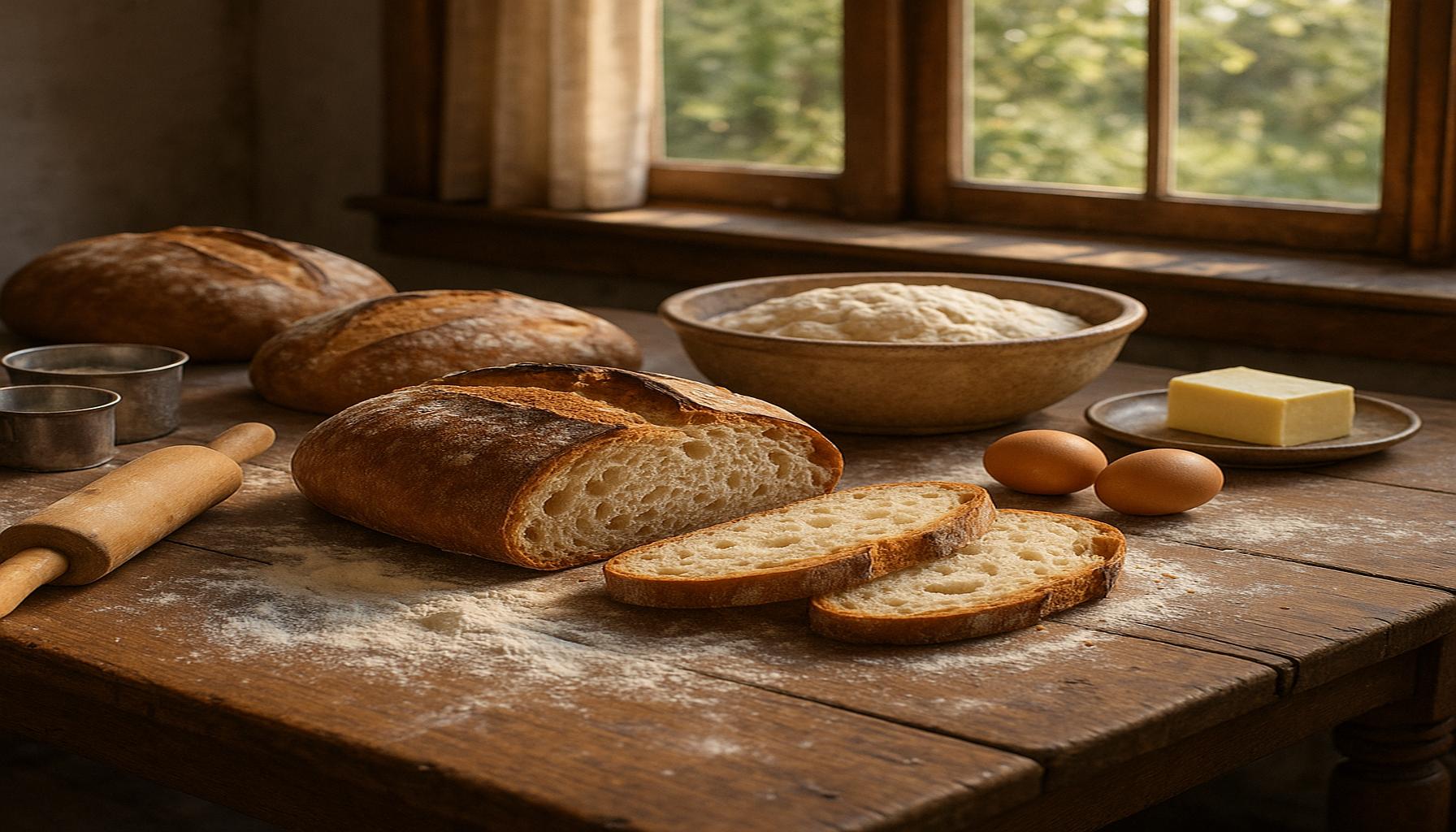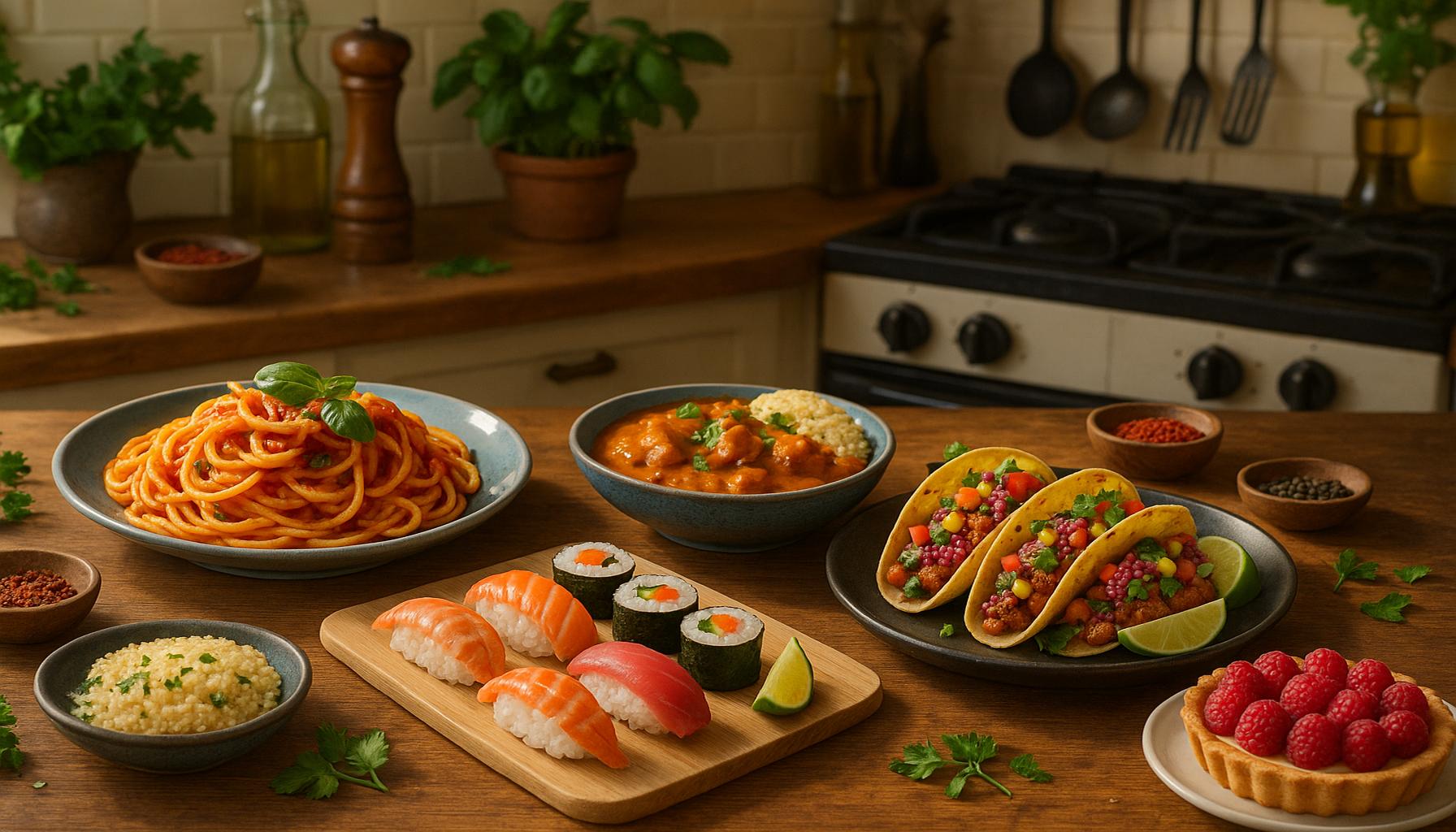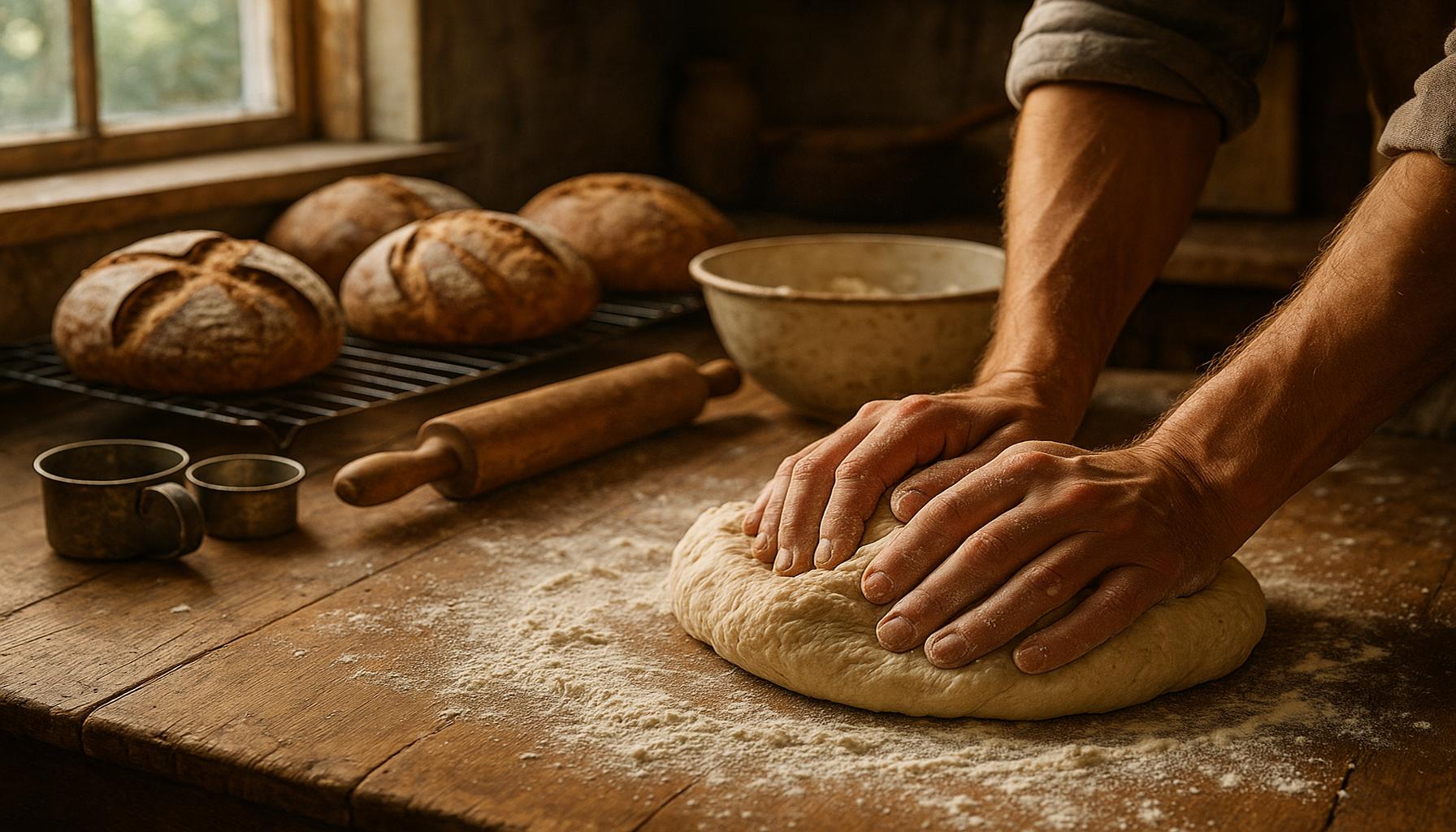The Art of Baking: Discovering the Magic of Homemade Bread

The Joy of Crafting Your Own Bread
Baking your own bread is more than just a culinary task; it’s a craft that infuses your home with warmth and invites family and friends to gather. With the right techniques and ingredients, you can create bread that delights the senses and elevates your meals. There’s a certain magic in the act of bringing together flour, water, yeast, and salt, transforming them into a delightful loaf that can serve as the centerpiece for many cherished moments.
Imagine the aroma of fresh bread wafting through your kitchen, evoking memories of your grandmother’s cozy home or the local bakery from your childhood. Here are some captivating reasons to embrace the art of baking:
- Healthier Ingredients: One of the most significant advantages of baking your own bread is the ability to control what goes into it. By choosing high-quality ingredients and avoiding preservatives and artificial additives often found in store-bought bread, you ensure a healthier option for your family. For instance, using whole grain flours can increase the nutritional value, contributing fiber and vitamins.
- Customization: The beauty of homemade bread lies in its adaptability. You have the freedom to tailor flavors and textures according to your preferences. Want a nutty flavor? Experiment with grains like spelt or incorporate sunflower seeds. Prefer something fragrant? Add herbs like rosemary or thyme. The options are endless, allowing you to create unique combinations that reflect your taste.
- Therapeutic Process: The rhythmic kneading and shaping can be a form of meditation, providing a break from today’s fast-paced environment. Many bakers find solace in the process, as the act of molding dough engages both body and mind. It’s a moment where you can disconnect from the hustle and bustle of your day-to-day life and immerse yourself in something tactile and rewarding.
Moreover, homemade bread can be as simple or intricate as you desire. From classic sourdough, which requires a well-maintained starter and patience, to the straightforward soft sandwich loaves, every type comes with its own set of techniques and tips. For instance, a crusty baguette needs a steam-injected oven to develop that signature crust, while a focaccia benefits from being topped with olive oil and sea salt before baking.
So, why not seize the opportunity to explore this ancient skill? Joining local baking classes or online workshops can enhance your knowledge and technique. You can even involve your children or friends in the process, turning baking into a social activity that strengthens bonds. In other words, the magic of homemade bread not only fills your belly but also your heart, creating connections and cherishing traditions along the way.
By exploring the world of baking, you open up a treasure trove of flavors, aromas, and memories just waiting to be created. The warm loaf of bread fresh from your oven is more than sustenance; it’s an invitation to gather, to share, and to create lasting memories. So dust off that apron and let the adventure begin!
EXPLORE MORE: Click here to discover traditional recipes
The Fundamentals of Baking Bread
Understanding the fundamentals of baking is essential for anyone eager to master the art of baking homemade bread. At its core, bread-making is a delightful interplay of science and creativity, where a deep understanding of ingredients and techniques can take your skills to the next level. The four primary ingredients in nearly every loaf—flour, water, yeast, and salt—each play a vital role, and knowing how they interact can unlock a world of possibilities in your baking journey.
Flour is the backbone of bread. Different types of flour yield various textures and flavors, making it essential to select the right one for your desired outcome. All-purpose flour works well for many recipes, but experimenting with bread flour, which contains a higher protein level, can result in chewier and more structured loaves. For those seeking a wholesome option, whole wheat flour adds a nuttier flavor and increases the nutritional value, although the hydration levels and kneading techniques may need adjustment due to its denser composition.
Next is water, the key to activating flour and creating gluten, the protein that gives bread its elasticity. The temperature and quality of water also matter—using filtered or bottled water can eliminate any chlorine flavors that tap water might impart. Furthermore, understanding the right ratio of water to flour is vital for creating the perfect dough consistency. Too much water may lead to sticky dough, while too little may result in a dry loave.
Yeast is the magical agent that causes bread to rise, bringing life to your dough. There are multiple varieties of yeast, with active dry yeast and instant yeast being the most common for home bakers. Active dry yeast needs to be proofed before using, while instant yeast can be mixed directly with dry ingredients, saving time and streamlining the process. Understanding how to activate yeast correctly—using the right temperature of water and allowing it the right amount of time to develop—can make all the difference in achieving that fluffy texture in your finished product.
Lastly, salt is often an underrated hero of baking. Not only does it enhance flavor, but it also regulates yeast fermentation, strengthening the gluten structure and ultimately contributing to the bread’s texture and crust. It’s crucial to find the right balance; too much salt can inhibit yeast activity, while too little can lead to bland bread. Using sea salt or kosher salt is recommended for a cleaner taste, ensuring that your bread stands tall and flavorful.
Essential Techniques for Successful Bread Baking
Once you’ve mastered the ingredients, understanding key techniques will further enhance your bread-making prowess. Here are some essential practices to consider:
- Kneading: This process develops gluten, creating a strong dough. Aim for a silky, elastic texture through a firm, yet gentle knead.
- Fermentation: Allowing the dough to rise is a crucial step. It develops flavors and results in a better texture. Pay attention to visual cues, such as doubling in size.
- Shaping: Proper shaping techniques can affect the final loaf. Ensure it retains its structure while allowing for an even rise during baking.
- Scoring: Making shallow cuts on the surface of your dough allows steam to escape in a controlled manner, helping the bread rise evenly and develop a beautiful crust.
As you delve deeper into the world of baking, remember that every loaf is an opportunity to explore and learn. Embrace the experimentation process, and don’t hesitate to try new techniques or ingredients. The magic of homemade bread lies not only in the end result but also in the journey of discovery along the way.
| Category | Advantages |
|---|---|
| Health Benefits | Baking at home allows you to control ingredients, ensuring a healthy balance free from preservatives. |
| Cost Efficiency | Homemade bread is often less expensive than store-bought options, offering significant savings over time. |
Baking homemade bread is not just a culinary skill, but a journey into the heart of tradition and flavor. With each loaf, you weave together the magic of ingredients and time, resulting in a product that reflects your efforts and passion. The ability to customize your bread recipes based on dietary needs or personal preferences introduces an exciting challenge for bakers of all skill levels. You can explore various flours, spices, or even add nuts and seeds, giving each loaf a unique signature. Moreover, the enchanting aroma that fills your kitchen during the baking process is incomparable, creating a sensory experience that evokes comfort and warmth.The educational aspect cannot be understated; by experimenting with different recipes and techniques, bakers gain valuable skills and insights into the lives of those who have baked before them. This connection fosters a sense of community, encouraging you to share your creations with friends and family. Through the delectable journey of homemade bread baking, you not only nourish your body but also enrich your spirit with the joy of creation.
DIVE DEEPER: Click here to discover the art of storytelling
Unlocking Flavor Profiles and Regional Varieties
As you become more comfortable with the basic techniques of bread-making, a fascinating new world awaits: the diverse flavors and textures offered by different regional breads. Each type of bread tells a story, shaped by local ingredients and cultural traditions. Exploring these unique loaves can inspire your creativity and elevate your homemade creations.
Sourdough is perhaps one of the most iconic artisan breads you can make. Characterized by its tangy flavor and chewy texture, sourdough begins with a starter—a mix of flour and water teeming with wild yeast and bacteria that naturally occur in the environment. The slow fermentation process fosters complex flavors, giving each loaf a unique personality that reflects its surroundings. Bakers across the United States have developed their own variations, such as San Francisco sourdough, which is particularly renowned for its robustness due to the local microbial diversity. To dive into sourdough baking, consider keeping a starter that you can nurture and feed, unlocking flavors that can take months to develop.
Focaccia, hailing from Italy, offers another exploration avenue with its moist and herb-infused texture. Traditionally topped with olive oil, rosemary, and a sprinkle of sea salt, focaccia can also serve as a blank canvas for seasonal ingredients. Tasty add-ins like caramelized onions, roasted garlic, or even sun-dried tomatoes can transform this simple bread into a feast for the senses. While making focaccia, it’s essential to allow the dough to rise adequately, as this leads to the typical airy pockets found within each piece.
Bagels, a New York City staple, present another interesting leap into regional baking. The unique boiling process before baking contributes to the bagel’s distinctive chewy texture and shiny crust. Freshly baked bagels can be customized with a variety of toppings—from sesame seeds to a classic everything bagel mix that brings forth a delightful burst of flavors. For those passionate about experimenting, consider exploring flavored bagels such as blueberry or pumpkin spice during the respective seasons.
Using Flavor Enhancements
If you are keen to step up your bread game, consider incorporating flavor enhancements that can elevate your basic recipes. Add-ins like nuts, seeds, dried fruit, or herbs can add delightful surprises to your loaves. For example, adding walnuts or cranberries to a whole wheat loaf can enhance texture and introduce new taste dimensions, making your bread not only more enjoyable but also visually appealing.
- Spices: Sprinkling ground cumin, cinnamon, or even chili flakes into the dough can evoke comforting warmth or add an exciting kick, depending on your preference.
- Cheese: Incorporating aged cheese like cheddar, gouda, or feta can create a savory flavor explosion. The interactions between melted cheese and crust during baking result in a rustic finish that’s simply irresistible.
- Herbs: Fresh herbs such as rosemary, thyme, or basil add brightness and a fragrant aroma to your bread. Mixing finely chopped herbs directly into the dough is an easy way to bring the flavors of the garden into your kitchen.
By learning about these various bread types and experimenting with creative flavors, you’re well on your way to becoming a skilled artisan in the art of baking homemade bread. Each loaf you create becomes not just a meal, but a reflection of your personalized baking journey—full of tastes and textures waiting to be savored by friends and family alike. The magic of homemade bread is in recognizing that while the journey may be intricate, it is also deeply rewarding, with each new technique or recipe an invitation to taste the world from your kitchen.
DISCOVER MORE: Click here to elevate your dining experience
Conclusion: Embrace the Journey of Homemade Bread
In the enchanting world of baking, the family tradition of making homemade bread can become a fulfilling adventure. The techniques and insights explored throughout this article have illuminated the path toward mastering the craft of bread-making. From the distinct tanginess of sourdough to the rich, herbed textures of focaccia and the chewy perfection of bagels, each loaf tells a unique story steeped in cultural heritage and personal creativity.
What sets homemade bread apart is not simply its taste but the process that connects bakers to their ingredients. The ritual of kneading, the anticipation of rising dough, and the mesmerizing aroma wafting through the kitchen all contribute to a heartwarming experience. As you explore different flavor enhancements—be it through the introduction of spices, cheeses, or fresh herbs—you engage with the potential to create truly bespoke loaves that resonate with your culinary identity.
As home bakers across the United States experiment with regional varieties, they also foster a deeper connection with their communities and the markets that supply local ingredients. So whether you’re a novice or an experienced baker, remember that the art of baking is about discovering, learning, and most importantly, sharing. Each loaf can be a canvas upon which you can express your personal flair while inviting friends and family to join the celebration of homemade food. Ultimately, baking bread isn’t just about nourishment; it’s about creating cherished memories and savoring the magic of homemade goodness in every bite.


